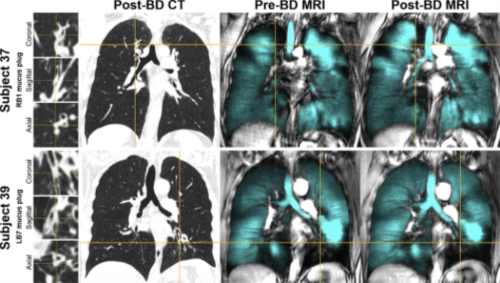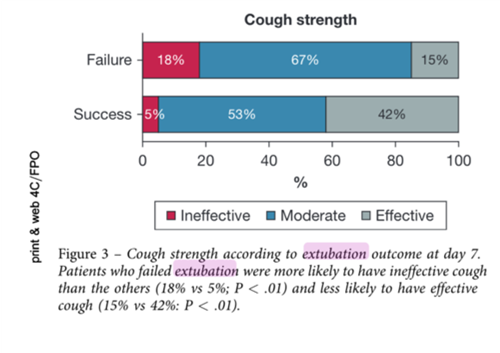Hot in Journal CHEST® June 2019
By: Dr. Kamran Boka (@boka_md)
June 28, 2019
 Each month, we ask our Social Media Co-Editors of CHEST to weigh in on the hot topics in CHEST. It's June, so let's hear from Dr. Boka as he outlines his highlights. After reviewing the issue, be sure to share your hot list on our Facebook wall, tweet with the hashtag #journalCHEST, or discuss in the CHEST LinkedIn group.
Each month, we ask our Social Media Co-Editors of CHEST to weigh in on the hot topics in CHEST. It's June, so let's hear from Dr. Boka as he outlines his highlights. After reviewing the issue, be sure to share your hot list on our Facebook wall, tweet with the hashtag #journalCHEST, or discuss in the CHEST LinkedIn group.
CT and Functional MRI to Evaluate Airway Mucus in Severe Asthma
Recently, one of my #pulmCC fellows, Dr. Neal George, delivered his Senior Grand Rounds on non-cystic fibrosis bronchiectasis. He reinforced an interestingly simple concept in that the major contributing factor to quality of life in patients with this condition is airway clearance. This is well known in pulmonary disease management, in both guidelines and in clinical practice. Yet it is interesting to me that in pulmonary clinical practice, mucus clearance in asthma appears to be largely ignored.

Figure 3 pp.1184
Why is this?
It is presumably and largely due to a lack of clinician quantification of airway mucus. If anything, the forced expiratory volume in one second (FEV1), which is one of the most commonly used tools in pulmonology, has been the traditional marker to understand luminal obstruction. A low FEV1 typically leads one to think of an obstructive process, allowing for the quick in-office diagnosis. Then again, bread and butter asthma has also not been considered a suppurative process.
Recently there have been studies to better understand the what and the how of intraluminal makeup of mucus plugs. Imaging techniques to determine intraluminal mucus plug cytology are being adopted. Particular cytokines, such as IL-13, are to blame in the stimulation of airway mucus. These efforts are largely in part to better understand how to tailor biologic therapy to the asthma patient.
In this month’s June CHEST issue, Svenningsen and colleagues looked at the functional relevance of mucus plugging in terms of ventilation heterogeneity assessed using MRI.
They researched mucus plugs in severe asthma patients through the following methods: quantification of plugging on CT scans, a technique using MRI ventilation to determine ventilation defect percent (think: V/Q scan ventilation mismatch), spirometry and plethysmography, measurements of sputum eosinophilia, fractional exhaled nitric oxide (FENO) , and also multiplex array measurements of IL-4 and IL-13. Quantification of mucus plugging on CT scans was finalized as a score with radiologists interpreting as controls.
Svenningsen found that the mucus score is associated with an unregulated IL-4 and IL-13 pathway. Furthermore, both airway eosinophils and mucus were associated with ventilation abnormalities on MRI. “Patients with asthma and a high mucus score had worse MRI VDP than those with a low mucus score." This is exciting because heterogenous ventilation on MR images has shown to be an independent and better predictor of asthma control.
Svenningsen’s results may lead us to better endotype the asthma patient with excess mucus production. Makes me wanna ask more pointed questions about mucus quantification…
To read the study, check out the June issue of CHEST.
Procalcitonin-Guided Antibiotic Discontinuation and Mortality in Critically Ill Adults
I am sure at this point you have wondered at least once about the utility of procalcitonin for antibiotic stewardship in sepsis. Of course, we probably all have.
Years ago, it was apparent in my early fellowship days that there was a new lab marker on the block. The PRORATA trial was a relatively new publication at that time. Departmental journal clubs featured it well and probably more than once. On morning rounds, the term “procal" was thrown around with an academic air, (and frequently) under the ID umbrella of a usually tense assessment and plan of a resident's systems-based presentation.
I personally wasn’t convinced for many years of this procal’s place in my ICU rounds, and specifically, if this should be used to shorten antimicrobial therapy in the septic patient. Data for this over the next number of years would continue to be conflicting, further reinforcing my skepticism. (Mind you, my skepticism was for procalcitonin’s seemingly frequent and “off-label” use outside of the studied populations.)
This month’s issue of CHEST presents a systematic review and meta-analysis of procalcitonin-guided antibiotic discontinuation in critically ill adults reporting survival or antibiotic duration. Pepper and colleagues reviewed all known randomized trials that used procalcitonin to guide antimicrobial de-escalation in the critically ill patients; outcomes for review included mortality, antibiotic duration/exposure, and hospital and ICU length of stay.
To my surprise, Pepper and colleagues found the data to be in favor of the use of procalcitonin regarding reducing mortality and antibiotic duration/exposure in critical care illness (patients with critical care illness were one subgroup analyzed). Yet in the sepsis-only patients, the mortality was not reduced.
Be sure to check this article out as it is sure to adjust practice patterns and reduce antibiotic overuse/misuse.
Inability of Diaphragm Ultrasound to Predict Extubation Failure

Since the 1990s trials of Esteban, we have continued in critical care practice to seek the holy grail of reliable predictors for our intubated patients. We, intensivists, look and need reliable data that we can trust. After the respiratory therapist runs the ventilator mechanics checklist of NIF, VC, RSBI, and other respiratory acronyms, we are in continued need for data points to help us understand probability and predictability.
I like to trust that to date in my clinical practice during spontaneous breathing trials, I weigh the presence of a robust cough high on my checklist. Because over and over reliably it has been shown that a strong cough that is forceful enough to expel mucus can clear and more reliably protect an airway. Always ask for the cough, I say. Coupled with a good mental status, a robust cough is usually a powerful enough data point to give me confidence to extubate.
Enter ultrasound.
With the increasing use of ultrasound in critical care (point of care ultrasound/POCUS), there are many unique uses for this modality not only in bedside diagnosis, but also in management. As I teach my fellows, placing a curvilinear or linear probe on the trachea post-intubation to determine placement has been shown to be 98% sensitive, 100% specific, and 99% accurate.
Now what about using ultrasound for extubation?
In this month’s June 2019 CHEST edition, Vivier and colleagues asked the following question:
Could ultrasound-detection of diaphragmatic dysfunction prior to extubation reliably predict ICU extubation failure?
Vivier conducted a prospective multicenter trial focused on patients admitted to the ICU, over the age of 65, and with underlying cardiopulmonary disease (or who had respiratory failure and intubated over 1 week). A prior definition of bilateral diaphragmatic excursion (<10 mm) and apposition thickening fraction (<30%) was used, and patient cough strength was assessed. Extubation failure was defined as reintubation or death within 1 week following extubation.
The results?
Vivier found that clinical assessment of cough strength was the only predictor of extubation outcome!
Check out the full article to see the authors’ discussion on ultrasound use in extubation.